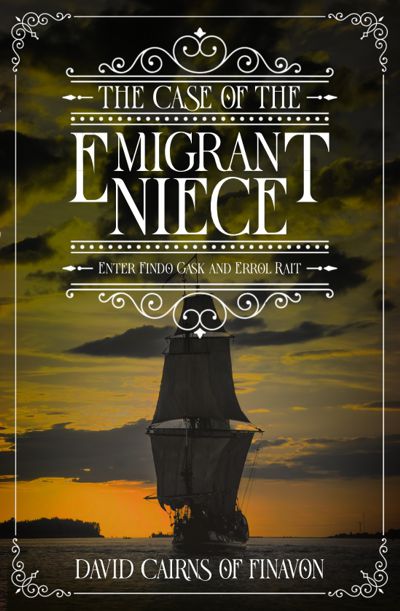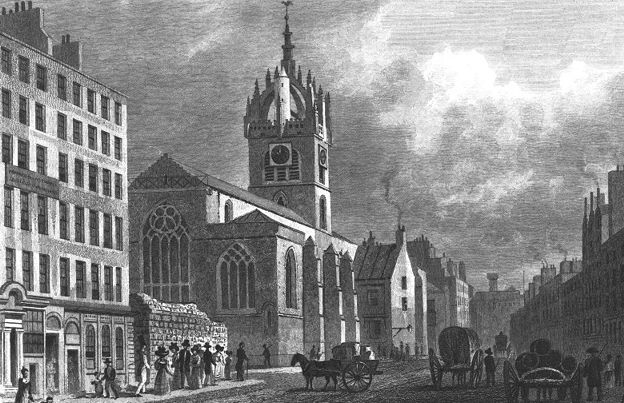
Blurb
A multiple murderer on the loose, an inheritance stolen
Injured at the start of the Indian mutiny in 1858, Scotsman Findo Gask finds himself in Melbourne during the fabled Gold Rush where he stumbles across the mystery of a stolen inheritance. Captivated by the pretty heiress, together with his new idiosyncratic friend, Erroll Rait he begins to investigate for her, travelling back to London, Edinburgh, the Scottish highlands and then to Melbourne again, uncovering multiple murders before falling foul of a sinister plot to add himself and his client to the list of victims.
The Resurrection of Auld Reekie
I have been fortunate to have travelled widely and, in the process, have lived and worked on four continents and seen many of the world’s great cities. While Venice captures the imagination like no other, Edinburgh is my clear number two. It’s topography, beautiful architecture, history, romance, culture, and ‘get-aboutability’ are undeniably unique and, while other cities can match and perhaps surpass some of these elements, none match it for the overall combination. I never tire of the place, eagerly grasping all it has to offer every time I visit.
In my new book, ‘The Case of the Emigrant Niece’, I was able to explore this fascination by time-travelling back to the mid 1800s, bringing to life the people and the city as it was then.
Like so many things, writing historical fiction is a double-edged sword. Going back in time, researching obscure facts, is mandatory if your story is to have any veracity. But it takes enormous patience, time and persistence when it would be so much easier just banging on about the story without having to worry about the backscape.
Granted, it’s much easier these days ferreting out information with the internet to aid you, but I also find jewels in more traditional sources like old newspapers and I rely upon the fruits of many years spent collecting books on Scotland and its history from wee bookshops tucked away in unexpected corners of towns and cities. I am particularly indebted to one three-volume work I acquired several years ago: Cassell’s ‘Old and New Edinburgh, it’s History, its Peoples, and its Places’ published in 1882.

Otherwise incidental things become important when you are recreating life long past, like whether St Giles cathedral had a clock on its tower in the 1860s so your hero could note the time? (fyi – it did. Illustrations from the mid 1800s show it to have had four clock faces which were removed in 1911. I was also intrigued to find that in 1700, musical bells were installed in the church spire and that when the 1707 Act of Union was enacted, the bells of St Giles’ chimed to the tune Why should I be so sad on my wedding day? – capturing the mood of the population).
Writing about the everyday folk of Scotland in the 19th century also adds another twist when you consider readers across the world. In constructing dialogue I had to consider how each character would have spoken and what words would have been used. While my father would be scunnered or tell me to haud yer wheesht, one American reviewer in Florida commented, “I … enjoyed the challenge of the Scottish vernacular …. although I must say I had to read it out loud a couple of times to really understand it”.

There is so much to write about in the city but there was one particular character that I wanted to resurrect. Greyfriars Bobby is known the world over but only as a story, a statue on a plinth. I took great delight bringing him back to life when two of my characters emerge from a tavern in 1858 into Candlemakers’ Row with a bone donated by the kitchen and, with the wind whipping their coats, they proceed to Greyfriars kirkyard. There, they seek out the faithful dog and offer the bone, “he sniffed it, then gently opened his jaws and delicately took the bone before lying down and gnawing away contentedly”. There’s nothing like a faithful hound.
Edinburgh was undergoing a transformation at this time too, so it was important to understand just what was happening to reflect the period. For example, coming into Edinburgh from London on the North British Railway required my hero to get off at the new platform at North Bridge Station with gaslights reflecting on the melting snow and, going to a meeting, he stops to inspect construction of a railway tunnel that would eventually lead to Waverley station.
I also have family in Scotland’s ancient capital of Dunfermline so decided to set some of the action in the town (city today, of course). Taking a train to Dunfermline was a different challenge then. There was no Forth Bridge, an iron bridge had been proposed early in the century but it had been considered impractical. A witty critic had remarked that the use of iron ‘would have given it a very light and slender appearance, so light indeed that on a dull day it would hardly have been visible, and after a heavy gale probably no longer to be seen on a clear day either’. Instead, the train took its passengers to Granton and then, using the wagons’ own wheels to roll the train onto and off a ferry by means of movable ramps, over the water to Burntisland before continuing on to Dunfermline.
Even following the story’s characters around the streets of Edinburgh required research because places are continually changing. I refer to one incident that takes place on George Street near Charlotte Square and note that the ‘modern’ church of St. George could be seen from any vantage point and that its dome was intended to be a smaller version of London’s St Pauls. At a cost of £33,000 (well over budget), I wonder if the citizens of Edinburgh considered it money well spent?
Amazon.com: https://amazon.com/Case-Emigrant-Niece-Erroll-Mysteries-ebook/dp/B0BD1N83CQ
Amazon UK: https://www.amazon.co.uk/Case-Emigrant-Niece-Erroll-Mysteries-ebook/dp/B0BD1N83CQ
Meet David Cairns

David Cairns, the Baron of Finavon (an ancient Scottish title), has always been a student of history and has the ability to create an atmosphere and three–dimensional experiences with his writing style. Until recently, he was a technology entrepreneur. He has lived and worked on four continents and as a result has experienced the history of London and Boston, the buzz of Chicago, Nashville and Silicon Valley, the pioneering atmosphere of the South African bush, the lazy lifestyle of the Bahamas, the cultural diversities of Europe and the laid-back lifestyle of Australia, which is where he makes his home these days.
Website: https://cairnsoffinavon.com/
Twitter: https://twitter.com/TheDavidCairns